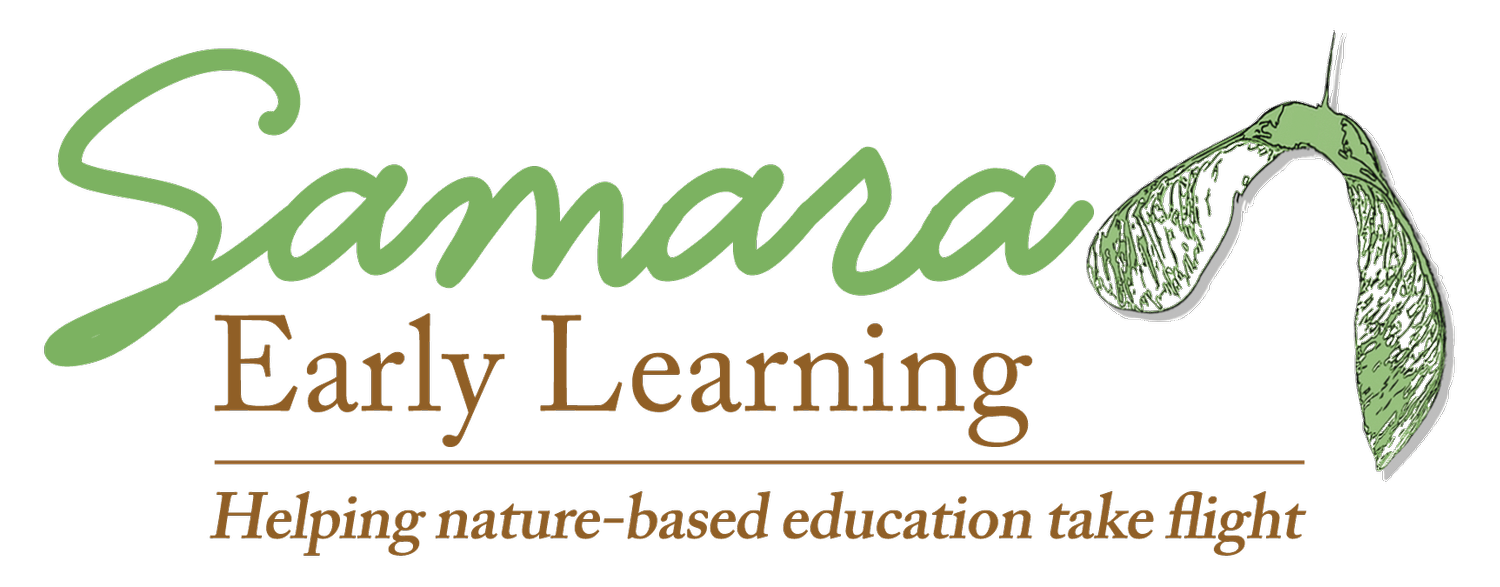Connecting the learning across all three spaces
This post originally appeared in Dr. 瑞秋一. Larimore’s weekly Samara newsletter on August 29, 2023. If you’re interested in receiving these emails, scroll to the bottom of this page to subscribe.
Over the last few weeks I’ve been talking about the three spaces of the 内部, 外, 除了. While the spaces themselves are important, what brings nature-based pedagogy to life is how we 使用 这些空间.
Ideally children’s experiences in the three spaces will connect 与 one another.
Connecting experiences is easiest when we allow children’s interests to lead. This requires adults to really see and hear children. When we pay attention to what children are noticing and asking questions about, we can more easily support their learning throughout the day and across learning spaces.
We can support learning across the 内部, 外, 及以后 in the following ways:
材料选择—What materials could be added to the 内部, 外, or 除了 to help children extend their play throughout the day? 例如, if they’ve been finding lots of worms outside, you could add buckets for collection, 尺子来测量它们的长度,/or a dry erase board for tallying how many they’ve found. Either indoors or outdoors, you could also bring in books about worms (such as 如何和虫子打招呼), paint 与 rubber worms from the bait shop, 等.
教师带领的活动—How could we connect the teacher-led activities throughout the day (e.g., large group meeting) to children’s current interests? If the children have been pretending to fish in the puddles in the outdoor play area or have been asking about the frogs in the nearby pond, 也许是书 《池塘上下 would be a good book to read at a large group meeting. The children’s sign-in for the day might be for them to put their name by the photo of their favorite pond animal. 不管是什么活动, the point is for children to have experiences throughout the day that connect them to their interests.
有联系的对话—How does the child’s current play connect 与 the play they’ve been doing in other spaces? How might I talk 与 them about those connections? Anytime we choose to talk 与 children it’s important to be intentional in our conversations. We don’t want to talk just to talk. A conversation means a back-and-forth exchange–not just isolated statements. Drawing children’s attention to the connections between their experiences is a great way to ensure our language is purposeful and more likely to open the door to true conversation rather than just talk.
经验记录—How are we documenting children’s play so they can reflect back on their own experiences and see their own voices reflected in the classroom? 当涉及到文档时, many think about anecdotal notes for ongoing 规划 and family conferences. It’s also important to record children’s experiences so they can more easily recall and reflect on their experiences. Documentation can happen through the conversations I mentioned above, individual or group journals (such as using Claire Warden’s Floorbooks approach), or simply photo or document displays. 例如, maybe the group ventures to the 除了 to build their favorite letters out of natural materials. Photographs of the children and their letters could then be displayed 内部–providing an opportunity for future conversations about letters, 他们远足到远方, 等.
As you engage 与 children throughout the day and plan for materials and activities, I hope you’ll be thinking about how children’s experiences and curiosities are connecting across the spaces of the 内部, 外, 及以后. This is the essence of a holistic approach–it’s ALL connected. 😊
不断改变生活,
瑞秋
瑞秋一. Larimore, Ph值.D., Chief Visionary of Samara Learning

